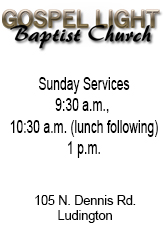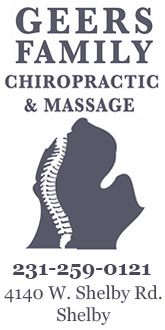New 911 medical dispatching raises concerns among first responders.
By Rob Alway, Editor-in-Chief.
WEARE TOWNSHIP (Oceana County) — Since May 1 Mason-Oceana 911 has been conducting a joint dispatch trial with Life EMS, allowing the Grand Rapids based company to screen medical emergency calls and dispatch EMS personnel appropriately. The procedure has met with mixed reviews, mostly unfavorable, from local first responders.
Mason-Oceana 911 Director Ray Hasil said for several years Life EMS officials have been encouraging Mason-Oceana 911, the local tax-payer funded service to allow the change. The 90-day trial ended on Aug. 22 but has continued pending a decision by the 911 board.
The 911 board’s communications committee was split on making a recommendation allowing the trial to become permanent when it met on Sept. 1. Now the decision will be made, without a recommendation, by the 911 board, which is scheduled to meet Wednesday, Sept. 15, at 10 a.m. at the dispatch center on Oceana Drive. The meeting is open to the public.
Mason-Oceana 911 is funded through telephone surcharges and a six year .14 mill bond, which was renewed by voters in 2020. It provides 911 emergency dispatch services to Mason and Oceana counties.
The 911 board consists of appointed representatives from law enforcement, fire service, county board of commissioners and emergency medical services in Mason and Oceana counties. The current board consists of Chair Craig Mast, Oceana County sheriff; Craig Hardy of Oceana County Board of Commissioners; Tim Kozal, Ludington police chief; James Duram, Oceana County Emergency Management coordinator, representing EMS in Oceana County; Jody Hartley, Mason County Board of Commissioners; Kim Cole, Mason County sheriff; Brad Fritcher, Ferry Township fire chief, representing Oceana County fire departments; Laude Hartrum, Pentwater police chief; Lt. John Forner, acting commander of Michigan State Police Hart Post; Dale Goodrich, Mason County Rural Fire Authority, representing Mason County fire departments; Jim Herrema, Life EMS, representing EMS in Mason County; and Matt Murphy, Scottville police chief.
Since May 1, Mason-Oceana 911 has forwarded medical emergencies to Life EMS dispatchers in Grand Rapids, who then determine the priority of a call (priority 1 is considered life threatening, priority 2 requires medical attention but not life threatening, and priority 3 is non-emergent). Life EMS, which is contracted with Mason and Oceana counties to provide emergency medical transportation, then dispatches its ambulance before relaying further information back to Mason-Oceana 911 to dispatch other agencies.
Typically a priority 1 and priority 2 call also include the response of medical first responders from a nearby fire department. Historically, the purpose of the medical first responder was to utilize paid-per-call (volunteer) fire department personnel who were able to arrive on scene several minutes before advanced life saving (ALS) personnel from an ambulance. Often, law enforcement personnel are also called to render aid or provide protection for responders.
Traditionally in Mason and Oceana counties, fire departments and ambulances are dispatched through audio pagers. In the past, those pagers were operated on a system that broadcast a tone on an analogue frequency, similar to FM or AM radio. Radio communications are then conducted on a digital frequency, similar to a cell phone. Last year, 911 upgraded its paging system to digital, a system that allows more options for communications but costs more. Recently, 911 has dually been dispatching responders through a smart phone app.
When a medical emergency was called in, the 911 one dispatcher would talk to the caller and then determine the priority, sending out EMS and a fire department, when appropriate.
Dispatching medical emergencies through Life EMS now involves at least two dispatchers, one in Grand Rapids and one at the Mason-Oceana 911 center in Oceana County’s Weare Township near the Mason-Oceana counties line.
According to Hasil, the 911 call first goes to Mason-Oceana 911. The local dispatcher asks the nature of the emergency. If the caller states it’s a medical emergency, the dispatcher first asks the caller’s address then transfers the call to the Life dispatcher. When Life receives the call, the dispatcher there will send a text message to an ambulance crew that is either nearest the call or available to respond. That initial alert may not be very detailed, Hasil said, but gives the crew a heads-up that they need to get ready and go en-route. Further details are then provided. The Life dispatcher will then contact Mason-Oceana 911 if other agencies are needed.
Hasil said the trial has raised many concerns among local responders and dispatchers. While the new procedure seems to be improving response times for Life EMS, it also seems to be slowing down response times for medical first responders and law enforcement, who more often than not, are closer to the scene of the emergency than the ambulance crew.
“One of the biggest challenges, on the dispatch side, is verifying the address,” Hasil said. “There are many addresses around Mason and Oceana counties where the address is not accurate. Or, there just isn’t an address, such as the Silver Lake Sand Dunes. Life EMS’s computer aided dispatch (CAD) requires a verified address before an ambulance can be dispatched. This also delays the dispatch of local first responders.”
Hasil said the pre-alert sent out to the ambulance crew has its advantages. However, that pre-alert is only sent to one ambulance crew, as opposed to the other system which sends out a radio broadcast, alerting other ambulance crews and also first responders who are monitoring their pagers.
Mark Meijer, president and CEO of Life EMS, said the dispatch protocol is the same procedure that is conducted in Newaygo, Lake, Kent, and Kalamazoo counties.
“We proposed this to basically enhance our services and to hopefully offer an advantage in the medical call process,” Meijer said. “Number one, it is allowing our medical dispatchers who operate the only accredited medical dispatch center in this area to serve Mason and Oceana counties.”
Meijer said the protocol allows Life EMS dispatchers to have initial contact with callers for medical emergencies. “Once it’s determined to be a medical call, the caller is conferenced with Life EMS. Mason-Oceana 911 stays on the line and hears the priority and can then immediately dispatch medical first responders. When we are doing medical call takin, we can alert our closest crew and start having them head that way before the call is prioritized. Any other emergency responder could do similarly… There shouldn’t be any negative impact on the call. There shouldn’t be any delay.”
Life EMS is a for-profit company contracted by Mason and Oceana counties and must meet a certain standard in response times, or else it gets penalized financially. The new system appears to improve those response times for Life but also appears to have had a negative impact on response time for local first responders.
“I don’t think it serves the constituency of Mason and Oceana counties correctly,” said Dale Goodrich of the Mason County Rural Fire Authority and a 911 board member. “I don’t think it’s good for them to wait another two minutes.
“I don’t think this is good for our community,” Goodrich, a retired Michigan State Police trooper said. “Taking a 911 call and switching to an operator in Grand Rapids to decide whether or not our first responders should go to an emergency just doesn’t seem efficient.”
Goodrich said data presented to the 911 communication committee showed in 2019 and 2020, on average, medical first responders would arrive on scene of an emergency within 12 minutes of being dispatched while Life EMS’s average was 14 minutes. During the trial period, Life’s response times have improved while first responders’ times have dropped to at least 14 minutes.
Goodrich also said he doesn’t agree with Life EMS’s definition of a response time. He said Life considers once an ambulance is en-route to a call, that qualifies as its response time. “I have been involved in emergency services since 1977 when I was first a volunteer firefighter and then served a career with MSP. During that time, the response time always ended when the responder arrived on the scene.
“Bottom line, I just don’t think it serves the people of Mason and Oceana counties in a manner that is conducive. Life EMS is a for-profit company and tax payers are paying our central dispatch to help us. If the situation caused our people to get help quicker, then I would be all for it. If I knew every person down the pike was going to get help faster, all it is doing is giving Life a check off that they responded in two minutes. I don’t think that is going to help our people.”
Oceana County Sheriff Craig Mast, who chairs the 911 board, said his top priority is making sure the people of Oceana and Mason counties are provided with the best care possible.
“My concern is that in an effort to get ambulances out sooner we are suffering with our response times with medical first responders in so many incidences. In a few incidences we are getting the ambulances there sooner but in more instances there are slower response times, or call out times, for the medical first responders.”
Mast said he does not consider himself an expert in the topic of medical care but has spoken to several people who are.
“I have made an effort to speak with as many people involved in the industry as I can, such as firefighters, medical first responders, ambulance personnel, and dispatchers. The responses have not been completely one sided.”
Riverton Township Fire Chief Joe Cooper said the system is not efficient for the taxpayers.
“I haven’t heard one good thing about it from any of the fire departments,” Cooper said. “Everything said has been negative on the fire side. We are delayed getting dispatched compared to what we used to be getting. This results in the response times being slower. The way we look at it, we went to school to be first responders and to try to get there and help our neighbors. Now, it seems that we are being intentionally delayed so the ambulance can improve its response times. Before, we were able to get first responders on the road right away. Now, there is a delay. These are people who have to leave their jobs, their homes, to get to the station or to the scene. Every second counts. The taxpayers deserve better.”
In a letter sent to the 911 board, dated Aug. 26, 2021, all seven fire chiefs of the Mason County Rural Fire Authority agreed with Cooper. Riverton Fire Department is part of the fire authority.
“The seven fire chiefs and departments of the authority do not wish to support Life EMS’s dispatch change that occurred starting 90 days ago,” the letter states. “The fire chiefs do not believe they are serving the community with the best service, by not being dispatched as soon as possible to their neighbors.” The letter was signed by Larry Pierce, chairman of the rural fire authority board.
The Oceana County Firefighters Fire Chiefs Association concurred in a letter dated Aug. 31, 2021.
“We are writing in reference to the upcoming vote on Life EMS medical dispatching for Oceana County. All of our departments that have medical response are not in favor of this change. The departments that have a medical response have seen a delay in getting dispatched in their communities. This is a significant strain on the system as a whole.”
A letter dated Aug. 31, 2021 from Dr. Loren Reed, Oceana County medical director, also expresses opposition to the change.
“Ambulance dispatch times did not appear to change significantly, however, there are several incidents in which a much better response time could have been achieved if they would have been dispatched by 911 as opposed to the silent dispatch,” Reed wrote.
“First responder dispatch times are noted to be significantly increased, which in turn significantly increases their response times.
“We have also noted that the silent dispatch has resulted in the ER staff being unaware of potential ambulance arrivals early and as a result have much less time to adjust and prepare for possible arrivals. This can be critical due to limited staffing that is typical of rural settings.
“This does not assess the issue of volunteerism in the county, which has made the ambulance service and first responders work so well in the county through the years. This is lost through silent dispatch. The response of fire, off-duty EMS, law enforcement, neighbors, and friends has saved many lives here in Oceana County in the past 40-plus years. For this reason, I would urge Mason-Oceana 911 to return to actively dispatching EMS services.
The sentiments of Ludington Fire Department echoed those of the rural Mason County departments. In an email dated Sept. 1, 2021, Ludington Fire Chief John Chief John Henderson expressed his concerns.
“The Ludington Fire Department has deep concerns around the changes for EMS calls. There appears to be a delay in getting my department out and headed to the call since these changes took place. We support a system that gets responders to our residents and visitors as soon as possible. This change appears to have a built-in delay that adds minutes in response time, which in our business can make a difference in whether a person lives or dies.”

 (1).png)
.jpg)
-Mason-County-Press.png)




.png)









































.png)















